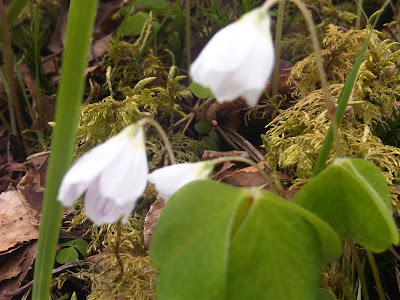Wildflower / Bush Tucker identification in the age of the smartphone
The persistently chilly north wind is a reminder that winter is still lurking nearby, yet spring, that most optimistic of seasons, is very much upon us. Wildflowers are popping up all around and this year I have resolved to identify the little devils as they appear. This isn't the first year that I have made such a resolution but this time it will be different, thanks to the novelty value of being able to send photos of flowers directly from phone to blog. In order to add further sport to my botanical investigations I'll be referring to Ray Mears' excellent book 'Wild Food' and commenting on the edibility of any plants I identify.
Note that I am not recommending that anyone eats the any of the plants below! Do let me know if you spot any misidentifications, you may save me from poisoning myself.
Note that I am not recommending that anyone eats the any of the plants below! Do let me know if you spot any misidentifications, you may save me from poisoning myself.
Excuse the variable quality photographs, I'm still working out how best to get my phone camera to focus on flowers.

Another tasty treat, Common Dog Violet. The leaves and flowers are reputed to provide very good eating, but the seeds and roots are to be avoided. Strathnairn 10/05/10.
It's worth noting where the yellow flowers of the Lesser Celandine pop up, for below the ground lurk small tubers which, according to Ray's goatee-beard-but-no-mustache sidekick, archaeo-botanist Gordon Hillman, would have provided a tasty treat for our ancestors. Photographed in Strathnairn, 08/05/10.

Another tasty treat, Common Dog Violet. The leaves and flowers are reputed to provide very good eating, but the seeds and roots are to be avoided. Strathnairn 10/05/10.
Wood Anemone, photographed in Glen Affric by the Dog Falls car park, 07/05/10. No suggestion from Ray and Gordon that these bad boys are edible.
Wood sorrel, both flowers and leaves are folded up, waiting for the sun. I'll be sampling this little beauty, for not only do the edible leaves make a good addition to salad or stuffing for fish, a rummage below the ground may reveal a sweet and tasty tap root. Another photo from Glen Affric.
Labels: Bush Tucker, Flowers, Spring




1 Comments:
Never heard of anyone eating Lesser Celandine, but it *has* been used as a herbal remedy for piles for a long time (hence the common name of Pilewort
Violets can be eaten in salads and made into wine, but are slightly laxative. It's sweet violets that are more commonly used.
Wood Anenome is definitely NOT edible and is quite poisonous. Beautiful flower though, and in folklore they were supposed to have bloomed from the tears of Aphrodite.
Wood Sorrel is delicious! Don't eat too much of the stuff though as it contains Oxalic acid and this might cause urinary stones to develop in certain people.
Post a Comment
Subscribe to Post Comments [Atom]
<< Home